German destroyer "Narvik": in the battle with common sense
В продолжение cycle about the most useless ships.
High performance of German technology allows you to close your eyes to many of its shortcomings. For many but one.
How were those “high performance” achieved? The answer is unlikely to please even the most staunch supporters of German engineering. The increase in the selected characteristics among the Germans was always achieved either at the cost of a critical deterioration of the remaining TTX, or contained some hidden “nuances”. Of course, these restrictions become known at the very last moment.
This was especially evident during the war years. Voluntarism of command and strange decisions of developers cost big problems to the Wehrmacht and Kriegsmarine.
How should one not respect his sailors in order to adopt Narvik-type destroyers?
“The power of fire is raging inside me!” Indeed, the “Tsershtorers” of the 1936A type surpassed all known destroyers in artillery power. But their overall fighting efficiency was in doubt. Why?
For destroyers built 1930-1940. optimal was considered a five-inch caliber. In practice, there was a scatter of ± 0,3 inches, and a variety of systems were hidden under similar values. For example, the British 120-mm (4,7 ”) sea guns, known for their mass, simplicity and compactness. The mass of a single-gun installation is within 9 tons, two-gun - 23 tons.
The Americans have short-bore 127 mm Mk.12 guns. Their relatively light projectile (25 kg) and mediocre ballistics were compensated by “nimble” guidance drives and unexpectedly high rate of fire. The mass of a single-gun installation on destroyers is 14 tons, a two-gun installation is from 34 to 43 tons. Large mass indicators are a consequence of the presence of powerful drives and the provision of automated recharging at elevation angles of more than 80 °.
The most powerful of the sea "five-inch" were considered Soviet guns of 130 mm caliber, whose shells (33 kg) stood out for their power. The Soviet Union did not have many ships, and there was no place to wait for help from the destroyers. A powerful gun with good ballistics was required. The mass of the single-gun installation B-13 is 12,8 tons.
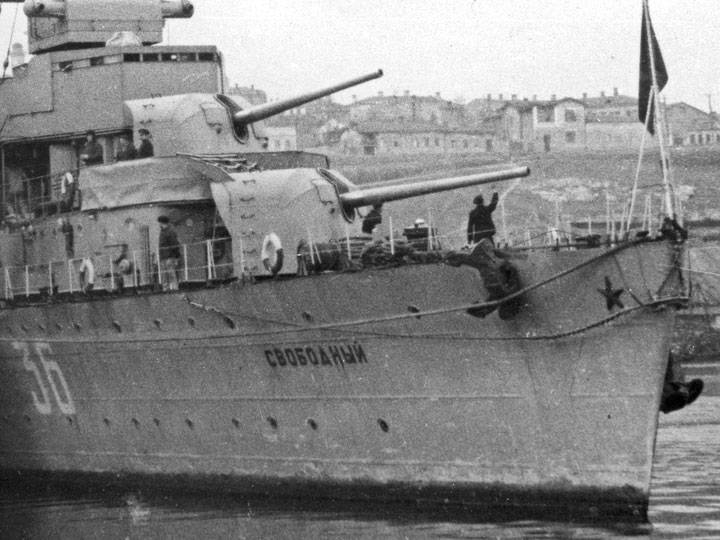
The 130-mm two-gun turret B-2LM already weighed 49 tons, of which 42 tons were in the rotating part. Mass growth is a direct consequence of the automation of the recharge process. Such massive artillery systems were not used on destroyers of the war years; only the leader of Tashkent managed to get them.
When it came to the Germans, the Narvik destroyer with the cruising main caliber became their answer.
The very name of the 15 cm Torpedobootkannone C / 36 guns sounded enchanting. A six-inch gun for destroyers!
The mass and caliber of the projectile are connected by a cubic dependence
With an increase in caliber from 130 to 150 mm, the mass of the projectile increases by 1,5 times. However, it becomes harder and the artillery system itself. First of all, due to the automation of the loading process necessary with such a caliber. Manually moving 50 kg of ammunition even in the absence of pitching becomes problematic. The dimensions of elevators and conveyors are increasing. The mass of the turntable, all drives and mechanisms increases sharply.
The simplest in design tower with a pair of "six-inch" weighed 91 tons.
We are talking about the British Mark XXI with 6 ”/ 50 guns for light cruisers such as“ Linder ”and“ Aretyusa ”(early 30s). The cruiser towers had a symbolic anti-fragmentation armor (25 mm), and the bulk of their mass was on the platform with mounted guns and ammunition supply mechanisms on it.
The 1-inch 6-gun installations also had impressive weight. For example, the 150 mm MPL C / 28 installation of the Deutschland cruiser weighed 25 tons.
At this point, the introduction ends and criticism begins.
Dear Sirs, Even though you are not specialists at the Deutscher Schiff und Machinenbau enterprise, what is your opinion? What problems did the Nazis have to face when creating a destroyer armed five guns of cruising caliber?
First and obvious: it is technically impossible
With the indicated difference in the mass of 5- and 6-inch artillery systems, the destroyer will simply tip over from the prohibitive “upper weight”. Of course, when it comes to full-fledged 6 ".
But what if ...
The true caliber of the German “six-inch” was 149,1 mm, and their shells weighed 5 kg less than the British counterparts. The differences are small to make a difference in battle. On the other hand, they did not lead to a significant reduction in the mass of the artillery system.
The technique did not tolerate bullying. But it was possible to recoup on the sailors!
Manual supply of six-inch ammunition, even in the absence of pitching, icy winds and lashing streams of water, was not an easy task ... But not for real goofy!
Why massive conveyors and rammers with electric drive - let the Germans deliver shells with their hands. With your hands!
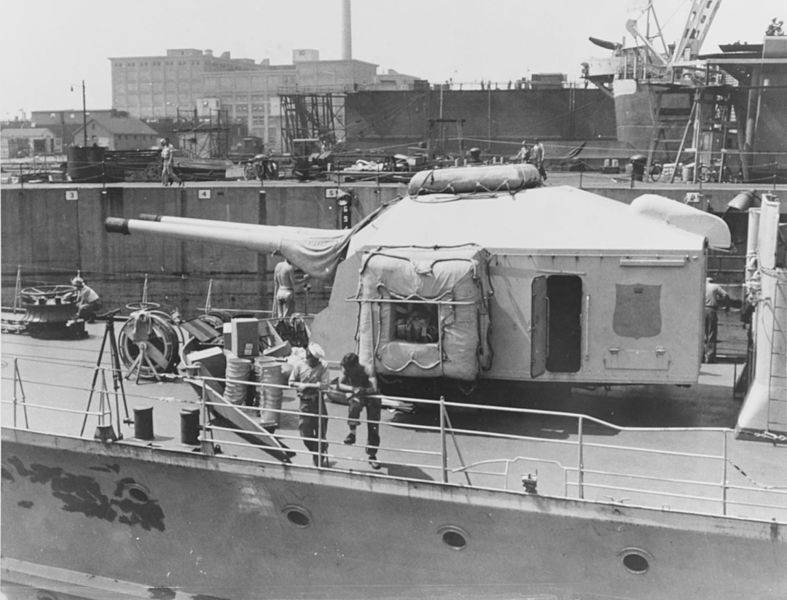
The mass of the two-gun turret with anti-fragmentation protection, in the absence of mechanization, was reduced to 60 tons.
The one-machine gun hit 16 tons. Of course, when placing the guns in a panel-mounted box-mounted installation open to all winds, the process of manually reloading 45 kg of shells took a little longer than what was calculated.
The firepower of the Narviks depended entirely on the weather and the endurance of the loaders.
It turned out to be insignificant in real combat conditions. Nobody expected this!
1943 year. The gray veil of the December storm was torn by two silhouettes: the light cruisers Glasgow and Enterprise. The task is to intercept the enemy’s discovered compound in the Bay of Biscay.
Unlike the modern Glasgow, armed with twelve 152 mm automated guns, the Enterprise was an outdated scout with only five 152 mm cannons, where shells were delivered manually. In this sense, it corresponded to the destroyer Narvik. Of which five appeared on the horizon at once, accompanied by six destroyers!
17 six-inch against 24 German. 22 torpedo tubes versus 76. Do not forget about support from destroyers such as the Elbing. The 1700-ton ships could not engage in artillery battle in stormy weather, but they actively maneuvered and put out smoke screens, "distracting" part of the Glasgow and Enterprise fires. At this time, a German long-range bomber attacked the cruisers ...
It would seem that it's over. One “Glasgow”, with the slurred support of his partner, did not extend this battle.
Over the next 3 hours, His Majesty's Glasgow ship killed everyone who was in the zone of destruction of his guns. German losses amounted to the flagship destroyer Z-27, two destroyers and 400 people. their crews. In response, the Narviks managed to achieve the only hit in Glasgow. The Germans were saved only by flight in different directions - their squadron was scattered along the entire coast of France.
A similar result ended the battle of Z-26 with the light cruiser "Trinidad", which was then continued by the destroyer "Eclipse", wedged at the end of the battle. The German super-destroyer drowned, also failing to inflict his weapons noticeable damage to the enemy.
Another feat of the Narviks was the battle with the funeral procession in the Norwegian Sea. Then the cruiser "Edinburgh" with torn stern, which was carried in tow by British destroyers, was attacked.
The day before the events described, the cruiser received two torpedoes hit by a U-456 submarine. "Edinburgh" lost control and almost could not move on its own. All that was left of the ship was its battle flag of the White Ensign, an artillery computing post and weapons.
The German destroyer Schöman, who took the risk of approaching, was destroyed by the second salvo in a row. The two remaining Narviks (Z-24 and Z-25) hastily left the battlefield, frightened by the shots of the uncontrollable and sinking Edinburgh and two of its towers, the British destroyers Forrester and Forsyth. Each of which was 1,5 times smaller than Narvik, and almost twice as large as the salvo.
The Germans did not succeed in any super destroyer capable of taking on the tasks of a light cruiser
According to military experts, such unsatisfactory results have a simple explanation.
With any excitement and other things being equal, the cruiser has always been a more stable artillery platform. He could shoot more accurately and further.
The cruiser was superior to the destroyer in the height of the freeboard, which was significant in the era when the combat posts were located on the upper deck.
The cruiser had superiority in fire controls.
Dimensions and displacement of light cruisers 30-40-ies. allowed to establish full-fledged closed towers on them, providing more or less comfortable working conditions for the calculations. The thickness of the walls of the tower provided minimal ballistic protection. And the technical level of the 30s made it possible to forget about the manual laying and sending of shells of this caliber.
The Germans knew about all the shortcomings associated with the deployment of heavy weapons on improperly sized ships even before the bookmark of Narvik. The first in the experimental order of the 15 cm TBK C / 36 gun was the Z8 destroyer Bruno Heinemann. The results were negative, seaworthiness and stability caused serious concern for sailors. The Bruno Heinemann hastily returned its original armament of five 128 mm guns.
Apparently, the unsuccessful experience with the Z8 was not enough, so the Germans laid down a whole series of 15 destroyers of the type 1936A and 1936A (Mob).
And the "Narviki" showed themselves in all their glory. So many failures led to a return to the traditional five-inch caliber (subsequent type 1936B). But the idea of a “super destroyer” still did not leave the Kriegsmarine leadership. There, they considered the proposal for the construction of a “bicaliber” modification of 1936B with the replacement of two 128 mm bow guns with a single 150 mm caliber. However, common sense prevailed. The complexity of fire control of two different calibers made such a project unpromising.
It remains to add that the choice of a disproportionate caliber for the destroyer completely deprived the artillery of Narvik of universality. It was almost impossible to conduct barrage anti-aircraft fire from main-caliber guns with elevation angles of 30 °.
But this is only a small fly in the ointment.
Continuation of the weight disaster
Even making the artillery as light as possible, it was not possible to completely cope with the excess weight.
No intensive methods worked, so the extensive path remained. The increase in the size of the ship itself.
Speaking about the destroyer Narvik, you need to understand that by European standards it was not a destroyer at all. Its total displacement exceeded 3500 tons. For comparison: the total displacement of the "Stalin seven", destroyer Ave. 7 "Angry", amounted to 2000 tons. The total displacement of the modernized Watchtower 7-U is about 2300 tons. British destroyers, for example, HMS Zealous (the future Israeli Eilat), had approximately the same values - 2500 tons.
American "Fletchers" built to fit the size of the Pacific Ocean, this is not an indicator. But even they were inferior in size to the German "overgrowth".
"Narvik" was unexpected large, complex and expensive for action in European waters. It was such a project that German industry lacked, experiencing an eternal lack of resources.
On average, 1000 tons more displacement than competitors.
Larger crew for 100 people.
A power plant with a capacity of up to 75 thousand hp, in size and cost, closely approaching the power plant of cruisers.
It is worth noting that due to the pinched nose and the specific sailing qualities associated with this, most Narviks could not even come close to the estimated values of 36-37 knots. Normal in practice was considered an indicator of 33 nodes. Only destroyers with a reduced composition of weapons developed somewhat higher speed (instead of the bow turret - one single-gun installation with a box shield).
As for the quality of the power plant itself, then this is indicated by a simple fact. According to the Naval Warfare Manual (Oberkommando der Marine, OKM), during the war years, one in four German destroyers stood at the wall of a shipyard with dismantled boilers. More than this was not observed in any of the fleets.
The reason is high-pressure Wagner boilers with a working pressure of 70 atmospheres. For comparison: the working pressure in the boilers of destroyers of the “Angry” type was 26 atm.
A classic case for German engines and power plants. Crazy afterburner, high specific indicators at the cost of merciless accident rate.
In terms of fuel consumption and cruising range, German destroyers, despite their size, were also inferior to most of their rivals.
The only advantage of the Narvik power plant was its high automation: the staff of the shift consisted of 3 mechanics, whose work posts were equipped with electric cigarette lighters. Undoubtedly the most useful element on board a warship.
On the other hand, a malfunction in the automation led to a complete loss of stroke. The Germans did not wait for the appearance of electronics, relying on unreliable and vulnerable analog control and monitoring devices.
Despite the described convenience of combat posts, the conditions for the deployment of personnel were terrible. Crowded accommodation in cockpits, three-tiered hammocks, lack of living space. This was explained by the absence of the need for long exits to the sea. Most of the time, the crews of German destroyers lived in naval bases or in barracks on the shore.
Should there be at least something good in this hopeless gloom of reason?
Undoubtedly!
"Narviki" carried the largest number of 20- and 37-mm anti-aircraft guns, among all destroyers in European countries. However, it is not surprising at their size.
Another absolute success was the quality of the fire and drainage systems, which traditionally had high priority on German ships. Their emergency operation was provided by four standby diesel generators located in the hull and superstructure. And the six main water bilge pumps had a capacity of 540 tons of water per hour!
Even having received serious injuries and having lost its course and combat effectiveness, Narvik continued stubbornly to mark the enemy’s radars. I had to shoot more and more to “finish off” the wounded animal.
However, some of them were lucky. For example, the Z-34, which was seriously damaged by Soviet torpedo boats. Despite the complete destruction of the engine room, that “Narvik” lasted until the approach of connecting the “Schnellbots” and with their help got to Swinemuende.
In general, the experience of creating a destroyer with "cruising" artillery was recognized as negative by the Germans themselves, who were forced to return to the construction of destroyers with a traditional armament.
The dimensions of the "tsertorer" did not allow to realize all the benefits of switching to a larger caliber, and I had to pay a very expensive price for it
Fifteen of the 15 German destroyers that took part in the war were essentially combat-capable ships. And the superiority declared for them in offensive power went unnoticed by the enemy.
Touching upon the topic of “Narviks”, one cannot but mention their theoretical rivals.
If they were not the prototype and the primary goal of the German super destroyers, then, in any case, they contributed to the development of the idea of a destroyer with powerful artillery.
We are talking about the French counter-carriers, in Russian terminology - the leaders of the destroyers Vokelen, Mogador, Le Fantask ...
The largest in size is the 4000-ton handsome Mogador, who was able to develop 39 knots in calm water. Armed with eight (!) Twin 138 mm caliber guns, whose shells exceeded 40 kg in weight. To the credit of the French, they managed to achieve combined loading, in which an automatic projectile rammer was used with trunk elevation angles of not more than 10 °. Then it was required to manually apply a relatively light sleeve with gunpowder. The mass of the open two-gun installation with a box shield was 35 tons.
If the Germans really saw “Mogador” as a threat and an object to follow, then this is evidence of the “competence” of the Kriegsmarine leadership. With its outward brilliance and splendor, the Mogador turned out to be a meaningless project, all of whose tasks were reduced to the tasks of ordinary destroyers with more traditional sizes and composition of weapons. With a disproportionate difference in the cost of their construction.
For its direct purpose (reconnaissance at the squadron of high-speed battleships), the Mogador was even more useless than for artillery combat. At that time, catapults with reconnaissance aircraft were already on board all the large ships. There was no need for a high-speed reconnaissance ship.
In the 1930-1940s. not one of the attempts to create a special class of warships with a displacement of 3,5-4 thousand tons was successful in practice. The destroyer remained the destroyer.
For a radical increase in combat capabilities, it was necessary to add several thousand tons of displacement, which automatically transferred the project to the class of light cruisers. No successful intermediate options were found.
About the French counter-carriers, it has already been said.
The American Girings and Sumners spent the entire stock of displacement on anti-aircraft guns and ensuring autonomy for operations on the vast ocean. They could not boast of either speed or a significant increase in artillery weapons (high-quality universal guns, but no more). Actually, they have nothing to do with it. These are the usual destroyers of the Pacific theater of operations.
“Tashkent”, with its “noble” origin and excellent speed qualities, remained unarmed for its size.
But it is better to be unarmed than the way the Germans did. All of the listed ships surpassed the Narvik in terms of combined performance and combat capabilities.
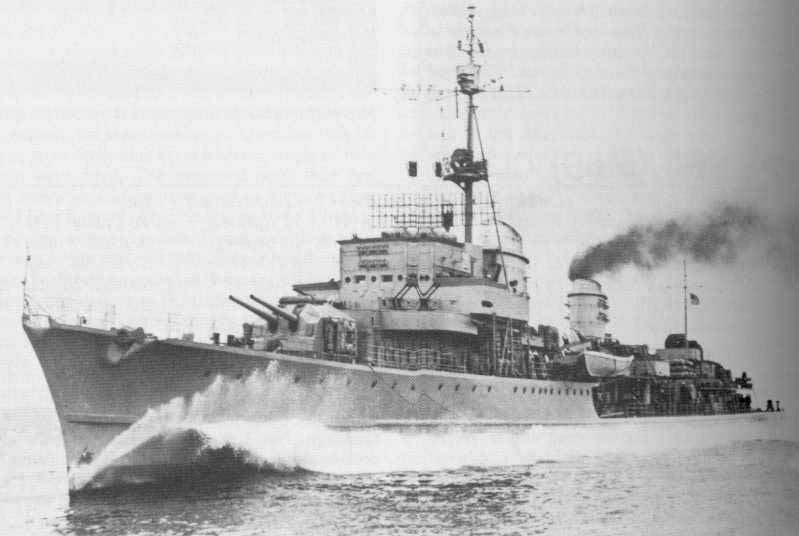
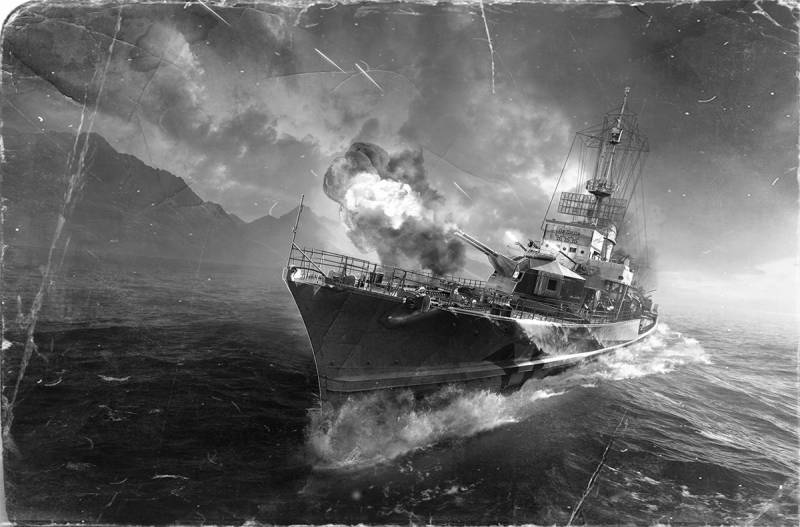
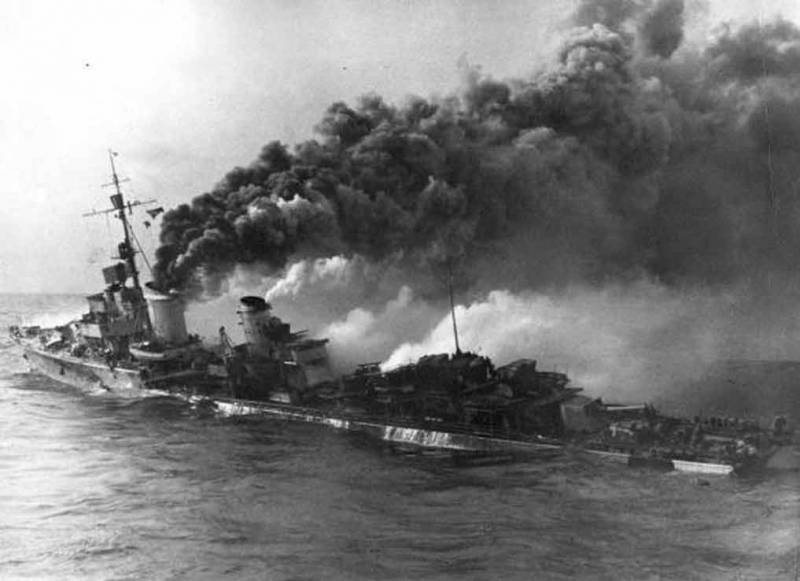
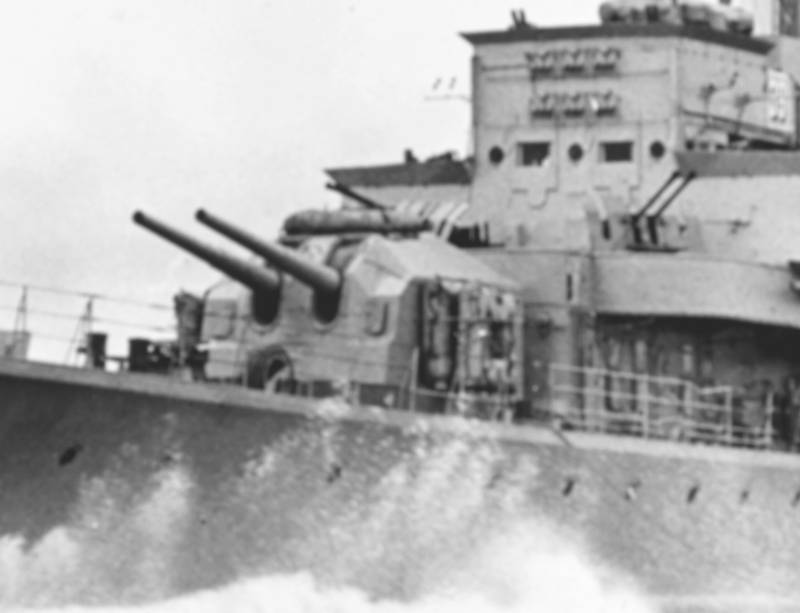
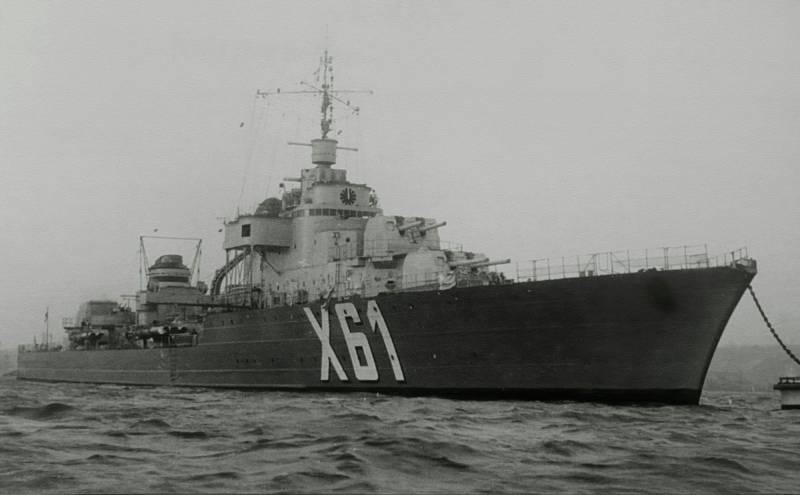
Information